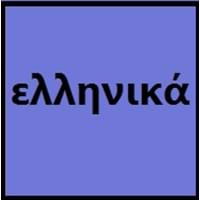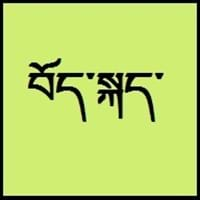Countries
Cyprus, European Union, Greece
China, Nepal
National Language
Albania, Cyprus, Egypt, France, Greece, Italy, Romania, Turkey, Ukraine
Nepal, Tibet
Second Language
Roman Empire
Not spoken in any of the countries
Speaking Continents
Asia, Europe
Asia
Minority Language
Albania, Armenia, Australia, Hungary, Italy, Romania, Turkey, Ukraine
China, India, Nepal
Regulated By
Center for the Greek language (Κέντρον Ελληνικής Γλώσσας)
Committee for the Standardisation of the Tibetan Language
Interesting Facts
- Greek is the longest documented language of all the Indo-European Langauges.
- The official language of education in the Roman Empire was Greek.
- Tibetan dialects vary alot, so it's difficult for tibetans to understand each other if they are not from same area.
- Tibetan is tonal with six tones in all: short low, long low, high falling, low falling, short high, long high.
Similar To
Armenian
Not Available
Derived From
Latin
Not Available
Alphabets in
Greek-Alphabets.jpg#200
Tibetan-Alphabets.jpg#200
Scripts
Arabic, Latin
Tibetan alphabet, Tibetan Braille
Writing Direction
Left-To-Right, Horizontal
Left-To-Right, Horizontal
Hello
γεια σας (geia sas)
བཀྲ་ཤིས་བདེ་ལེགས། (tashi delek)
Thank You
ευχαριστώ (ef̱charistó̱)
ཐུགས་རྗེ་ཆེ་། (tujay-chay)
How Are You?
πώς είσαι (pó̱s eísai)
ཁྱེད་རང་སྐུ་གཇུགས་བདེ་པོ་ཡིན་པས།
(kayrang kusu debo yimbay?)
Good Night
Καληνυχτα (Kali̱nychta)
གཟིམ་ལཇག་གནང་དགོས་། (sim-jah nahng-go)
Good Evening
καλησπέρα (kali̱spéra)
དགོང་དྲོ་བདེ་ལེགས།
Good Afternoon
Καλὸ ἀπόγευμα (Kaló apóyevma)
ཉིན་གུང་བདེ་ལེགས།
Good Morning
καλημέρα (kali̱méra)
སྔ་དྲོ་བདེ་ལེགས། (nga-to delek)
Please
παρακαλώ (parakaló̱)
thu-je zig / ku-chee.
Sorry
συγνώμη (sygnó̱mi̱)
ཀོང་དགས་། (gawn-da)
Bye
αντίο (antío)
ག་ལེར་ཕེབས་། (kha-leh phe)
I Love You
Σε αγαπώ (Se agapó̱)
ང་ཁྱེད་རང་ལ་དགའ་པོ་ཡོད་ (nga kayrâng-la gawpo yö)
Excuse Me
Με συγχωρείτε! (Me synhoríte)
དགོངས་དག བཟོད་དུ་གསོལ། ཐུགས་རྗེ་གཟིགས།
Dialect 1
Cappadocian Greek
Central Tibetan
Where They Speak
Greece
China, India, Nepal
Dialect 2
Griko
Khams Tibetan
Where They Speak
Italy
Bhutan, China
Dialect 3
Mariupol
Amdo Tibetan
Where They Speak
Ukraine
China
How Many People Speak
Not Available
Speaking Population
Not Available
Native Name
ελληνικά
བོད་སྐད་ (pö-gay)
Alternative Names
Ellinika, Graecae, Grec, Greco, Neo-Hellenic, Romaic
Bhotia, Dbus, Dbusgtsang, Phoke, Tibetan, U, Wei, Weizang, Zang
French Name
grec moderne (après 1453)
tibétain
German Name
Neugriechisch
Tibetisch
Pronunciation
[eliniˈka]
Not Available
Ethnicity
Greeks or Hellenes
tibetan people
Language Family
Indo-European Family
Sino-Tibetan Family
Subgroup
Hellenic
Tibeto-Burman
Branch
Not Available
Not Available
Early Forms
Proto-Greek, Mycenaean Greek, Ancient Greek, Koine Greek and Medieval Greek
Old Tibetan, Classical Tibetan
Standard Forms
Modern Greek
Standard Tibetan
Language Position
Not Available
Signed Forms
Greek Sign Language
Tibetan Sign Language
Scope
Individual
Not Available
ISO 639 6
ells
Not Available
Glottocode
gree1276
tibe1272
Linguasphere
56-AAA-a
No data Available
Language Type
Living
Not Available
Language Linguistic Typology
Subject-Verb-Object
Not Available
Language Morphological Typology
Fusional, Synthetic
Not Available
Greek and Tibetan Speaking population
Greek and Tibetan speaking population is one of the factors based on which Greek and Tibetan languages can be compared. The total count of Greek and Tibetan Speaking population in percentage is also given. The percentage of people speaking Greek language is 0.18 % whereas the percentage of people speaking Tibetan language is Not Available. When we compare the speaking population of any two languages we get to know which of two languages is more popular. Find more details about how many people speak Greek and Tibetan on Greek vs Tibetan where you will get native speakers, speaking population in percentage and native names.
Greek and Tibetan Language Codes
Greek and Tibetan language codes are used in those applications where using language names are tedious. Greek and Tibetan Language Codes include all the international language codes, glottocodes and linguasphere.





